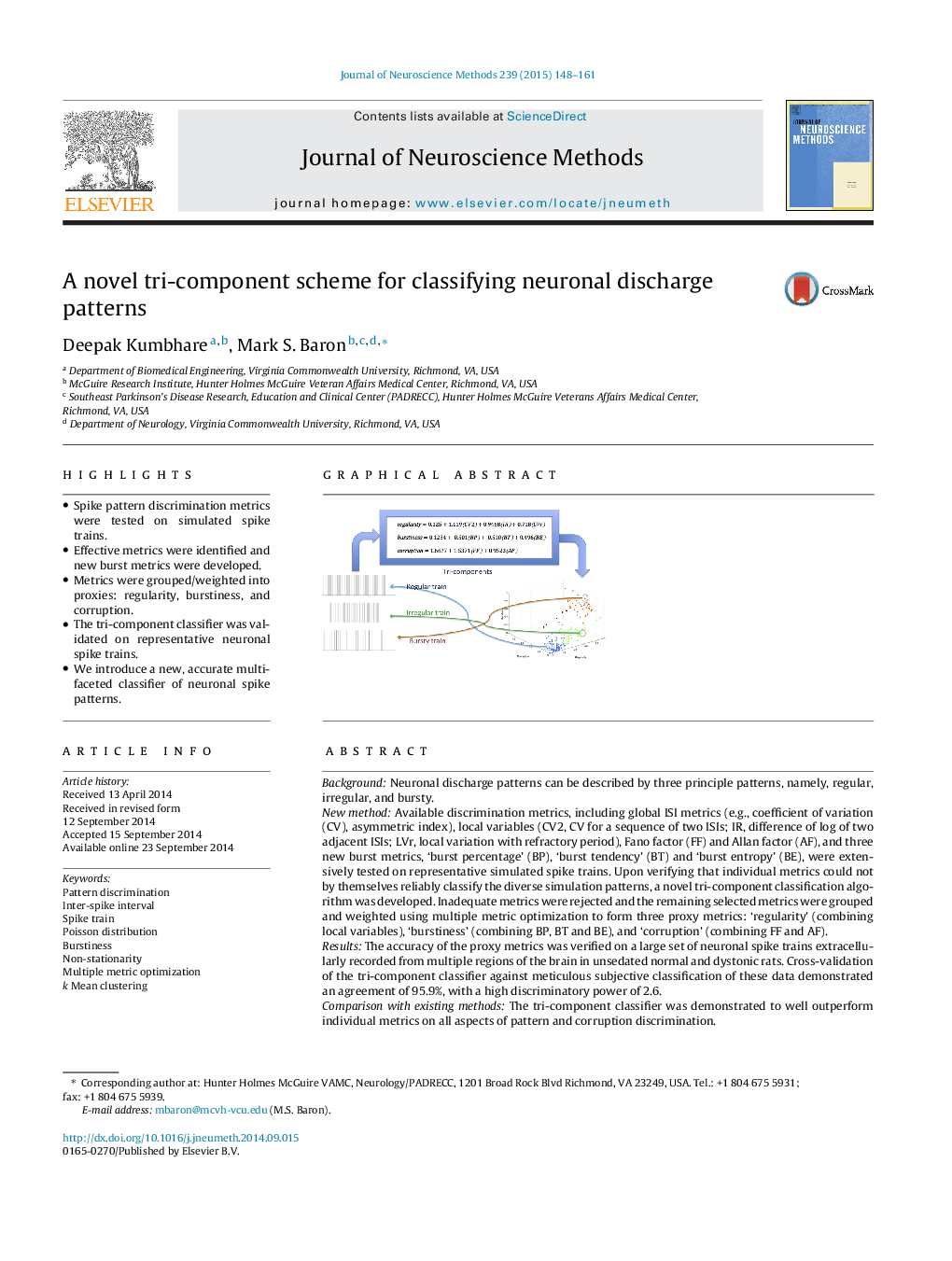| کد مقاله | کد نشریه | سال انتشار | مقاله انگلیسی | نسخه تمام متن |
|---|---|---|---|---|
| 6268544 | 1614630 | 2015 | 14 صفحه PDF | دانلود رایگان |
- Spike pattern discrimination metrics were tested on simulated spike trains.
- Effective metrics were identified and new burst metrics were developed.
- Metrics were grouped/weighted into proxies: regularity, burstiness, and corruption.
- The tri-component classifier was validated on representative neuronal spike trains.
- We introduce a new, accurate multi-faceted classifier of neuronal spike patterns.
BackgroundNeuronal discharge patterns can be described by three principle patterns, namely, regular, irregular, and bursty.New methodAvailable discrimination metrics, including global ISI metrics (e.g., coefficient of variation (CV), asymmetric index), local variables (CV2, CV for a sequence of two ISIs; IR, difference of log of two adjacent ISIs; LVr, local variation with refractory period), Fano factor (FF) and Allan factor (AF), and three new burst metrics, 'burst percentage' (BP), 'burst tendency' (BT) and 'burst entropy' (BE), were extensively tested on representative simulated spike trains. Upon verifying that individual metrics could not by themselves reliably classify the diverse simulation patterns, a novel tri-component classification algorithm was developed. Inadequate metrics were rejected and the remaining selected metrics were grouped and weighted using multiple metric optimization to form three proxy metrics: 'regularity' (combining local variables), 'burstiness' (combining BP, BT and BE), and 'corruption' (combining FF and AF).ResultsThe accuracy of the proxy metrics was verified on a large set of neuronal spike trains extracellularly recorded from multiple regions of the brain in unsedated normal and dystonic rats. Cross-validation of the tri-component classifier against meticulous subjective classification of these data demonstrated an agreement of 95.9%, with a high discriminatory power of 2.6.Comparison with existing methodsThe tri-component classifier was demonstrated to well outperform individual metrics on all aspects of pattern and corruption discrimination.ConclusionsThe tri-component classifier provides a novel, reliable algorithm to differentiate highly diverse neuronal discharge patterns and discriminate natural or erroneous corruption in the signal.
Journal: Journal of Neuroscience Methods - Volume 239, 15 January 2015, Pages 148-161
